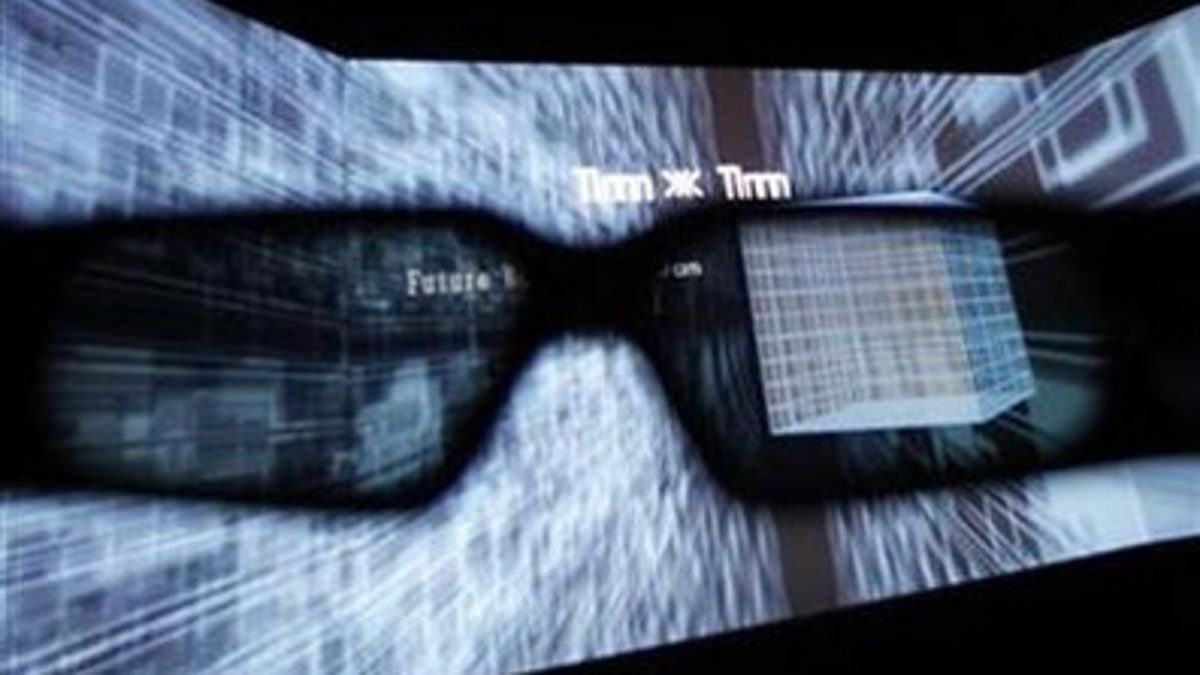
June 23, 2010: A 3D display is seen through glasses during a demonstration by virtual reality content and technology provider Solidray at the 3D and Virtual Reality Expo in Tokyo. (REUTERS/Yuriko Nakao)
Most adults younger than 45 would make the wrong choice if they were experiencing the symptoms of a stroke: They'd wait to go to the hospital.
A new study finds that only about 33 percent of people younger than 35 said they would be "very likely" to go to the hospital if they experienced numbness, weakness or difficulty speaking, all of which can be symptoms of stroke. And 73 percent said they'd probably wait to see if the symptoms went away before seeking medical help.
The findings are alarming for physicians, because the first 3 hours after a stroke are known as the "golden window." In other words, getting treatment during this time frame can be the difference between recovery and permanent brain damage.
"Timely treatment for stroke is probably more important than for almost any other medical problem there is," Dr. David Liebeskind, a neurologist at Ronald Reagan UCLA Medical Center, said in a statement.
Risk for youth
It is important that young people know what to do about stroke symptoms, Liebeskind said, because strokes in the 18- to 45-year-old age group have increased by 53 percent since the mid-1990s. Increases in obesity and related conditions can explain the increase in stroke incidence in young people, according to a 2015 article in the journal Stroke.
Stroke is the fifth-leading cause of death in the United States after heart disease, cancer, respiratory disease and accidents, according to 2013 statistics from the Centers for Disease Control and Prevention. Strokes, which involve a loss of blood flow to the brain, killed nearly 130,000 Americans that year. Nearly 800,000 people in the U.S. experience a stroke each year. [7 Things That May Raise Your Risk of Stroke]
Risk factors and symptoms are often missed, however. For example, women may experience symptoms other than the classic numbness, weakness and difficulty with sight and speech. Women are more likely than men to experience hiccups, chest pain and dizziness as symptoms of stroke, for example.
Even medical professionals may fail to diagnose a stroke when one has occurred, particularly in women and minorities. One 2012 study in the journal Stroke found that only 41.7 percent of stroke patients had their brains imaged within 25 minutes of arriving at the hospital — a key diagnostic procedure.
Missed signs
The new study suggests that the problem could begin before patients reach the hospital. In the new national survey of more than 1,000 people, researchers found that most people under 45 would not immediately get to a hospital if they were experiencing classic stroke symptoms.
"That's a real problem," Liebeskind said. "We need to educate younger people about the symptoms of stroke and convince them of the urgency of the situation, because the numbers are going up."
In 2005, about 7 percent of strokes occurred in 20- to 45-year-olds, according to 2010 research. Jennifer Reilly, a seemingly healthy 27-year-old joined the ranks of young stroke victims in 2007, when she woke up in the middle of the night with a splitting headache, she said in the UCLA statement. She had been experiencing some numbness in her left hand that kept coming and going, over the previous days.
But Reilly felt young and healthy, and didn't go to the hospital until a co-worker urged her to the next day. There, she was diagnosed with a rare condition called moyamoya, which causes the blood vessels in the brain to narrow.
For most people, regular exercise and a healthy diet are the best ways to prevent stroke, according to the National Stroke Association. Quitting smoking and limiting alcohol consumption are also key.
Physicians use the mnemonic "Act FAST" to identify the common symptoms of stroke:
F (Face): Does one side of the person's face droop?
A (Arms): Does one arm drift downward if the person tries to raise both arms?
S (Speech): Is speech slurred or strange?
T (Time): If you observe any of these symptoms, call 911 immediately.
Copyright 2016 LiveScience, a Purch company. All rights reserved. This material may not be published, broadcast, rewritten or redistributed.
